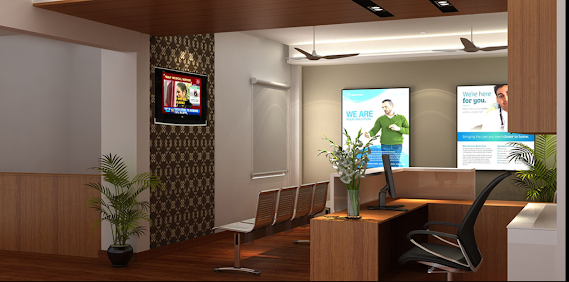Interior Design Style for the Home Office
There are two ways that you can go about opting the general scenery of your home office either follow the style that prevails in the rest of your home, or treat your office as an individual space. Choosing which way to go is a simple task taking answers to only a many questions.
Has your home been decorated in one style that's
visible throughout?
Is your office fluently visible from other
apartment areas of your home?
Does your work suggest a style of its own?
Grounded on the questions above, and then are a
many simple ways to help you fluently achieve pleasing scenery in your home
office.
Still, using the same scenery and style, your job
is formerly half done, if you're going to treat your office as a part of your
home. But flash back; you do not have to use the exact color scheme or mood.
You can modify what you see outside your office to blend easily. For case, you
can reverse the main and accentuation colors; you can use the same colors but
in different proportions; or a different position of formality. Because you're
decorating an office, it's likely that you're going to want to treat the style
else than how it appears in other areas of your home, and this is normal. Do
not be hysterical to produce a variation in the atmosphere -- it's only the general
style you're aiming to admire. In cities like Delhi and Gurgaon home office
is in trend. Many professional architects and Interior designers work from home
office.
For a home office that's open within an area of
your home, you're going to have to be a little more conservative. In this case,
you must admire the style seen around your office, but at the same time you
should surely aim to produce a sense of separation between your work space and
living space. Visual separation doesn't mean erecting a wall; it means creating
a new terrain within the being one. Some ways of creating visual separation
include changes in ceiling height and/ or bottom position( a step over or
down); a room separator placed to look ornamental rather than confining; color
changes similar as reversing the main and accentuation makeup colors used on
the walls; and cabinetwork placement.
Placing Cabinetwork in a way that the layout separates space is fairly simple, but do not forget to play with your ideas on graph paper first or differently you may find yourself still rearranging while you should formerly be at your office. Consider using a large bookshelf or storehouse press as a room separator-- the reverse of it can be decorated with fabric, makeup, a collage. or place cabinetwork back- to- back to produce the sense of two separate zones. Keep in mind while you're working on the layout that you do not want to feel that your office is, for case, in the reverse of your basement-- it's at the reverse of the basement. Just as words can be played with, so can space.
A home office that's to admit a style of its own is a delightful thing to work out. You should aim to have a bit of who you're visible in the scenery, while creating a visual sense of what you do. This isn't a chamber in a large office complex-- this is your office. However, classic buses, angels, If you have a love of bold patterns. Incorporate them into the scenery indeed if they've nothing to do with what you'll be doing in your office. At the same time, your office should say further about why you do that" I work at an office." What do you do at that office? If you're in the computer business, have effects around that suggest that, like an enlarged and framed ridiculous strip that has commodity to do with computers. However, incorporate your inventories into your scenery display spools of thread in a rainbow- suchlike pattern, hand a rod a many elevation from a wall and trim some fabrics over it for an ever- changing background, If your office is actually further of a factory and you do apparel alterations. However, have a model planner suspended, and display particulars or film land emblematic of some of your favorite destinations; if it will not get in your way, if you work in the trip assiduity.
When choosing the colors for your office, there
are a many introductory points to consider. Yellows, reds, and other veritably
warm colors in large amounts can beget you to feel thirsty. Blue is veritably
comforting, but be careful not to choose a mellow slate-blue that can actually
lead to feeling tired or restless. The stylish way to go about opting the
colors for your office is to choose three colors; use one as a main color (for
case on the walls), another as the main accentuation color (visible in a
pattern on a hairpiece, drapes, office accessories.), and the third as an
accentuation color appearing only in splashes then and there (similar as
flowers in a vase, a couple of print frames.). At this point your color scheme
is set, and all you have to do is keep in mind some introductory points of
color psychology. A dark ceiling will feel veritably low; glasses and
reflective accouterments make a space feel larger; too numerous colors,
especially bold bones, can beget a feeling of clutter indeed if there's
none.
A final point on the content of color and style
accouterments similar as forestland, gravestone, and essence can be
incorporated into any colour scheme-- although they may affect the style, they
won't disaccord. A natural pine office will clearly give a different look than
a mahogany one, but either will match any colour scheme; ditto for pristine
sword and brass, and marble and concrete.



Comments
Post a Comment